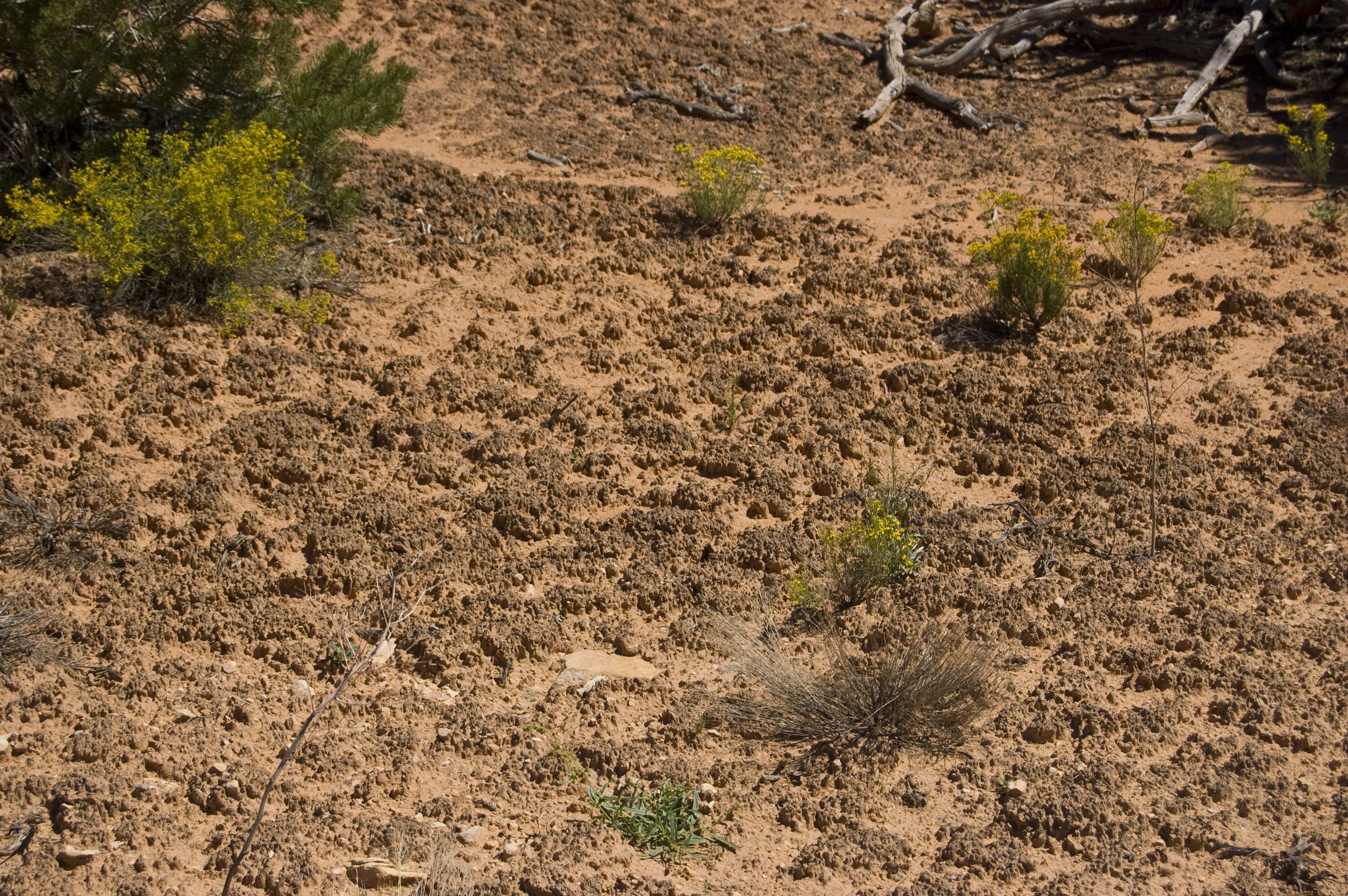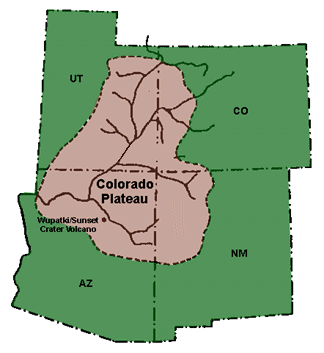|
Dyadobacter Crusticola
''Dyadobacter crusticola'' is a Gram-negative, psychrotolerant, aerobic and non-motile bacterium from the genus of Dyadobacter which has been isolated from biological soil crusts from the Colorado Plateau The Colorado Plateau, also known as the Colorado Plateau Province, is a physiographic and desert region of the Intermontane Plateaus, roughly centered on the Four Corners region of the southwestern United States. This province covers an area of ... in the United States. References External linksType strain of ''Dyadobacter crusticola'' at Bac''Dive'' - the Bacterial Diversity Metadatabase Cytophagia Bacteria described in 2005 Psychrophiles {{Bacteroidota-stub ... [...More Info...] [...Related Items...] OR: [Wikipedia] [Google] [Baidu] |
Bacteria
Bacteria (; singular: bacterium) are ubiquitous, mostly free-living organisms often consisting of one biological cell. They constitute a large domain of prokaryotic microorganisms. Typically a few micrometres in length, bacteria were among the first life forms to appear on Earth, and are present in most of its habitats. Bacteria inhabit soil, water, acidic hot springs, radioactive waste, and the deep biosphere of Earth's crust. Bacteria are vital in many stages of the nutrient cycle by recycling nutrients such as the fixation of nitrogen from the atmosphere. The nutrient cycle includes the decomposition of dead bodies; bacteria are responsible for the putrefaction stage in this process. In the biological communities surrounding hydrothermal vents and cold seeps, extremophile bacteria provide the nutrients needed to sustain life by converting dissolved compounds, such as hydrogen sulphide and methane, to energy. Bacteria also live in symbiotic and parasitic re ... [...More Info...] [...Related Items...] OR: [Wikipedia] [Google] [Baidu] |
Bacteroidota
The phylum Bacteroidota (synonym Bacteroidetes) is composed of three large classes of Gram-negative, nonsporeforming, anaerobic or aerobic, and rod-shaped bacteria that are widely distributed in the environment, including in soil, sediments, and sea water, as well as in the guts and on the skin of animals. Although some ''Bacteroides'' spp. can be opportunistic pathogens, many ''Bacteroidota'' are symbiotic species highly adjusted to the gastrointestinal tract. ''Bacteroides'' are highly abundant in intestines, reaching up to 1011 cells g−1 of intestinal material. They perform metabolic conversions that are essential for the host, such as degradation of proteins or complex sugar polymers. ''Bacteroidota'' colonize the gastrointestinal tract already in infants, as non-digestible oligosaccharides in mother milk support the growth of both '' Bacteroides'' and '' Bifidobacterium'' spp. ''Bacteroides'' spp. are selectively recognized by the immune system of the host through specif ... [...More Info...] [...Related Items...] OR: [Wikipedia] [Google] [Baidu] |
Cytophagia
Cytophagales is an order of non-spore forming, rod-shaped, Gram-negative bacteria that move through a gliding or flexing motion. These chemoorganotrophs are important remineralizers of organic materials into micronutrients. They are widely dispersed in the environment, found in ecosystems including soil, freshwater, seawater and sea ice. Cytophagales is included in the Bacteroidota phylum. Name etymology The name Cytophagales means 'cell eater', referring to the degradation of cellulose cell walls. 'Cytos' comes from the Ancient Greek noun κῠ́τος (kútos), which refers to a vessel, and a cell in biology. 'Phagien' comes from the Ancient Greek verb φαγεῖν (phageîn), which translates to "to eat". Biology and biochemistry General characteristics and biology Bacteria in Cytophagales are all Gram-negative and non-spore forming. They are non-flagellated, but move by exhibiting a gliding or flexing motion. Cytophagales are all unicellular, with rod-shaped cells ... [...More Info...] [...Related Items...] OR: [Wikipedia] [Google] [Baidu] |
Spirosomaceae
''Spirosomaceae'' is a family of bacteria in the phylum Bacteroidota. Genera The family ''Spirosomaceae'' comprises the following genera: * ''Arcicella'' Nikitin ''et al''. 2004 * '' Arcticibacterium'' Li ''et al''. 2017 * '' Arsenicibacter'' Huang ''et al''. 2017 * ''Dyadobacter'' Chelius and Triplett 2000 * ''Emticicia'' Saha and Chakrabarti 2006 * '' Fibrella'' Filippini ''et al''. 2011 * '' Fibrisoma'' Filippini ''et al''. 2011 * '' Flectobacillus'' Larkin ''et al''. 1977 (Approved Lists 1980) * '' Fluviimonas'' Sheu ''et al''. 2013 * '' Huanghella'' Jiang ''et al''. 2013 * '' Jiulongibacter'' Liu ''et al''. 2016 * '' Lacihabitans'' Joung ''et al''. 2014 * ''Larkinella'' Vancanneyt ''et al''. 2006 * ''Leadbetterella'' Weon ''et al''. 2005 * '' Nibrella'' Kang ''et al''. 2013 * '' Persicitalea'' Yoon ''et al''. 2007 * '' Pseudarcicella'' Kämpfer ''et al''. 2012 * '' Ravibacter'' Chaudhary ''et al''. 2017 * ''Rhabdobacter'' Dahal and Kim 2016 * '' Rudanella'' Weon ''et al''. ... [...More Info...] [...Related Items...] OR: [Wikipedia] [Google] [Baidu] |
Dyadobacter
Dyadobacter is a genus of gram negative rod-shaped bacteria belonging to the family Spirosomaceae in the phylum Bacteroidota. Typical traits of the genus include yellow colony colour, positive flexirubin test and non-motile behaviours. They possess an anaerobic metabolism (oxidase positive), can utilise a broad range of carbon sources, and test positive for peroxide catalase activity. The type species is ''Dyadobacter fermentans'', which was isolated from surface sterilised maize leaves, (apparently named after its ability to ferment glucose and fructose). Species of ''Dyadobacter'' have been isolated from a diverse range of environments worldwide, including glacial ice, seawater and factories, however a large number of the currently described species belonging to the genus ''Dyadobacter'' have been isolated from soil communities. Several studies observing the microbiome associated with plants have identified ''Dyadobacter'' species. These studies have recognized ''Dyadobacter' ... [...More Info...] [...Related Items...] OR: [Wikipedia] [Google] [Baidu] |
LPSN
List of Prokaryotic names with Standing in Nomenclature (LPSN) is an online database that maintains information on the naming and taxonomy of prokaryotes, following the taxonomy requirements and rulings of the International Code of Nomenclature of Prokaryotes. The database was curated from 1997 to June 2013 by Jean P. Euzéby. From July 2013 to January 2020, LPSN was curated by Aidan C. Parte. In February 2020, a new version of LPSN was published as a service of the Leibniz Institute DSMZ, thereby also integrating the Prokaryotic Nomenclature Up-to-date service. References External links List of Prokaryotic names with Standing in Nomenclature [...More Info...] [...Related Items...] OR: [Wikipedia] [Google] [Baidu] |
Gram-negative
Gram-negative bacteria are bacteria that do not retain the crystal violet stain used in the Gram staining method of bacterial differentiation. They are characterized by their cell envelopes, which are composed of a thin peptidoglycan cell wall sandwiched between an inner cytoplasmic cell membrane and a bacterial outer membrane. Gram-negative bacteria are found in virtually all environments on Earth that support life. The gram-negative bacteria include the model organism ''Escherichia coli'', as well as many pathogenic bacteria, such as '' Pseudomonas aeruginosa'', '' Chlamydia trachomatis'', and '' Yersinia pestis''. They are a significant medical challenge as their outer membrane protects them from many antibiotics (including penicillin), detergents that would normally damage the inner cell membrane, and lysozyme, an antimicrobial enzyme produced by animals that forms part of the innate immune system. Additionally, the outer leaflet of this membrane comprises a complex ... [...More Info...] [...Related Items...] OR: [Wikipedia] [Google] [Baidu] |
Psychrotolerant
Psychrophiles or cryophiles (adj. ''psychrophilic'' or ''cryophilic'') are extremophilic organisms that are capable of growth and reproduction in low temperatures, ranging from to . They have an optimal growth temperature at . They are found in places that are permanently cold, such as the polar regions and the deep sea. They can be contrasted with thermophiles, which are organisms that thrive at unusually high temperatures, and mesophiles at intermediate temperatures. Psychrophile is Greek for 'cold-loving', . Many such organisms are bacteria or archaea, but some eukaryotes such as lichens, snow algae, phytoplankton, fungi, and wingless midges, are also classified as psychrophiles. Biology Habitat The cold environments that psychrophiles inhabit are ubiquitous on Earth, as a large fraction of the planetary surface experiences temperatures lower than 10 °C. They are present in permafrost, polar ice, glaciers, snowfields and deep ocean waters. These organisms can a ... [...More Info...] [...Related Items...] OR: [Wikipedia] [Google] [Baidu] |
Aerobic Organism
{{disambiguation ...
Aerobic means "requiring air," in which "air" usually means oxygen. Aerobic may also refer to * Aerobic exercise, prolonged exercise of moderate intensity * Aerobics, a form of aerobic exercise * Aerobic respiration, the aerobic process of cellular respiration * Aerobic organism, a living thing with an oxygen-based metabolism See also * Anaerobic (other) Anaerobic means "living, active, occurring, or existing in the absence of free oxygen", as opposed to aerobic which means "living, active, or occurring only in the presence of oxygen." Anaerobic may also refer to: * Anaerobic adhesive, a bonding a ... [...More Info...] [...Related Items...] OR: [Wikipedia] [Google] [Baidu] |
Biological Soil Crusts
Biological soil crusts are communities of living organisms on the soil surface in arid and semi-arid ecosystems. They are found throughout the world with varying species composition and cover depending on topography, soil characteristics, climate, plant community, microhabitats, and disturbance regimes. Biological soil crusts perform important ecological roles including carbon fixation, nitrogen fixation and soil stabilization; they alter soil albedo and water relations and affect germination and nutrient levels in vascular plants. They can be damaged by fire, recreational activity, grazing and other disturbances and can require long time periods to recover composition and function. Biological soil crusts are also known as ''biocrusts'' or as ''cryptogamic'', ''microbiotic'', ''microphytic'', or ''cryptobiotic'' soils. Natural history Biology and composition Biological soil crusts are most often composed of fungi, lichens, cyanobacteria, bryophytes, and algae in varying proport ... [...More Info...] [...Related Items...] OR: [Wikipedia] [Google] [Baidu] |
Colorado Plateau
The Colorado Plateau, also known as the Colorado Plateau Province, is a physiographic and desert region of the Intermontane Plateaus, roughly centered on the Four Corners region of the southwestern United States. This province covers an area of 336,700 km2 (130,000 mi2) within western Colorado, northwestern New Mexico, southern and eastern Utah, northern Arizona, and a tiny fraction in the extreme southeast of Nevada. About 90% of the area is drained by the Colorado River and its main tributaries: the Green, San Juan, and Little Colorado. Most of the remainder of the plateau is drained by the Rio Grande and its tributaries. The Colorado Plateau is largely made up of high desert, with scattered areas of forests. In the south-west corner of the Colorado Plateau lies the Grand Canyon of the Colorado River. Much of the Plateau's landscape is related to the Grand Canyon in both appearance and geologic history. The nickname "Red Rock Country" suggests the brightly colo ... [...More Info...] [...Related Items...] OR: [Wikipedia] [Google] [Baidu] |




